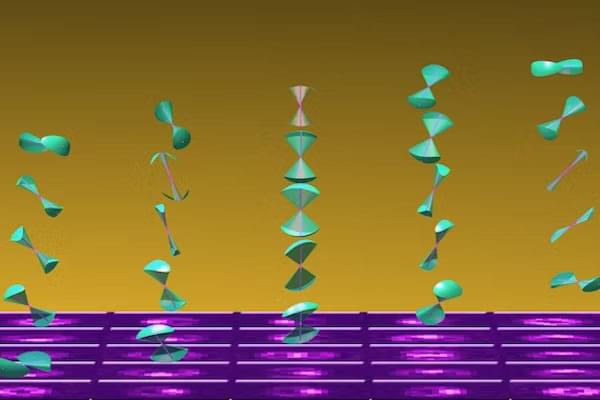Liquid amounting to a 1-2km-deep ocean may be frozen up to 20km below surface, calculations suggest.


Jim Clarke, Director of Quantum Hardware at Intel Labs, discusses how chemistry and physics drive the development of qubits in these unique systems. These systems will bring mind-blowing computing power to the world in the next decade and beyond.
Subscribe now to Intel on YouTube: https://intel.ly/3IX1bN2
About Intel:
Intel, the world leader in silicon innovation, develops technologies, products and initiatives to continually advance how people work and live. Founded in 1968 to build semiconductor memory products, Intel introduced the world’s first microprocessor in 1971. This decade, our mission is to create and extend computing technology to connect and enrich the lives of every person on Earth.
Connect with Intel:
Visit Intel WEBSITE: https://intel.ly/Intel.
Follow Intel on X: https://intel.ly/Twitter.
Follow Intel on INSTAGRAM: https://intel.ly/Instagram.
Follow Intel on LINKEDIN: https://intel.ly/LinkedIn.
Follow Intel on TIKTOK: https://intel.ly/TikTok.
How quantum computing will change our world | Intel.
/ intel.

With inventions like a nanomaterial-based battery for IoT and nanoscale transistors, the future of nanotechnology in this field seems to have potential. For now, any large-scale applications are likely years away. Companies must overcome technical, cost, and implementation hurdles before progressing to mass-market applications.
However, numerous nanoscale-sized discoveries and inventions will likely emerge in the coming years. As the value of nanotechnologies and IoT continue increasing, more investors, business owners, and researchers will explore possible use cases. While their inventions may not hit shelves for years, their development speed will surely accelerate.





The AI Scientist is designed to be compute efficient. Each idea is implemented and developed into a full paper at a cost of approximately $15 per paper. While there are still occasional flaws in the papers produced by this first version (discussed below and in the report), this cost and the promise the system shows so far illustrate the potential of The AI Scientist to democratize research and significantly accelerate scientific progress.
We believe this work signifies the beginning of a new era in scientific discovery: bringing the transformative benefits of AI agents to the entire research process, including that of AI itself. The AI Scientist takes us closer to a world where endless affordable creativity and innovation can be unleashed on the world’s most challenging problems.
For decades following each major AI advance, it has been common for AI researchers to joke amongst themselves that “now all we need to do is figure out how to make the AI write the papers for us!” Our work demonstrates this idea has gone from a fantastical joke so unrealistic everyone thought it was funny to something that is currently possible.

While new technologies, including those powered by artificial intelligence, provide innovative solutions to a steadily growing range of problems, these tools are only as good as the data they’re trained on. In the world of molecular biology, getting high-quality data from tiny biological systems while they’re in motion – a critical step for building next-gen tools – is something like trying to take a clear picture of a spinning propeller. Just as you need precise equipment and conditions to photograph the propeller clearly, researchers need advanced techniques and careful calculations to measure the movement of molecules accurately.
Matthew Lew, associate professor in the Preston M. Green Department of Electrical & Systems Engineering in the McKelvey School of Engineering at Washington University in St. Louis, builds new imaging technologies to unravel the intricate workings of life at the nanoscale. Though they’re incredibly tiny – 1,000 to 100,000 times smaller than a human hair – nanoscale biomolecules like proteins and DNA strands are fundamental to virtually all biological processes.
Scientists rely on ever-advancing microscopy methods to gain insights into these systems work. Traditionally, these methods have relied on simplifying assumptions that overlook some complexities of molecular behavior, which can be wobbly and asymmetric. A new theoretical framework developed by Lew, however, is set to shake up how scientists measure and interpret wobbly molecular motion.
